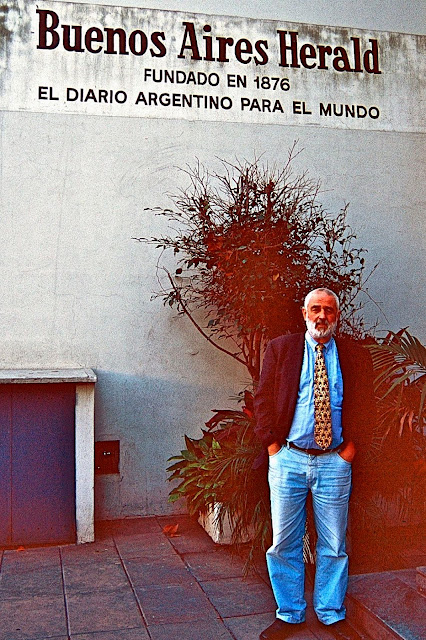In late 2014, I traveled crosstown from our Palermo
apartment to
San
Telmo’s Svenska Kyrkan (pictured above), where the Scandinavian communities of
Buenos Aires—Swedes,
Norwegians and Finns—were holding their annual Xmas festival. I’m not religious—to
say the least—but I was still curious about this gathering of the Vikings in what, on
the face of it, is an improbable urban environment.
 |
| San Telmo's Dansk Kirke is Buenos Aires's Danish church. |
To the best of my memory, the Danes were absent from the
event, though there’s a separate
Danish
church just a few blocks away and lunches at Retiro’s
Club Danés are a
delight. In the
Buenos
Aires province beach resort of
Necochea, it’s common to see
cars with Argentine plates and “DK” decals, but here I recall nothing.
 |
| Flags of Finland, Norway and Sweden hung from the ceiling at the Svenska Kyrkan. |
All throughout the building and the grounds there were
Scandinavian delicacies, along with souvenir items—some of them brought by the
countries’ respective embassies because, at that time, arcane import
restrictions effectively kept private parties from acquiring them. Most of the
baked goods were local, but almost everything produced overseas had to enter by
extra-official channels.
 |
| Many of the manufactured foodstuffs arrived through embassy intercession. |
That’s not the case in Berkeley, adjacent to my hometown of
Oakland, where the
Nordic House
specialty shop imports all sorts of Scandinavian food items and even carries a
selection of
Nordic
noir novels (mainly in English) and travel guidebooks. On Saturday, though,
Nordic House hosted my first-ever
kräftskiva,
at which Swedes and other Scandinavians devour plates of boiled crayfish and
slug down shots of
akvavit,
with a shout of
“Skål!” at the end of
boisterous drinking songs.
 |
| Berkeley's Nordic House carries a diversity of Scandinavian supplies. |
 |
| A plate of crayfish and potatoes at Nordic House's kräftskiva |
In honesty, I didn’t find the crayfish
especially appetizing (it doesn’t help that they make a messy meal), though
almost everyone else devoured as much as they could grab. Nor did the various
herrings and other specialties thrill me—I much preferred the roast moose, scalloped
potatoes (
identical to what my Swedish-American mother used to make) and other side dishes that my Swedish cousins served us in rural
Värmland. Still, my only real
complaint about Nordic House is that they’ve run out of
Hungry Troll
lefse (my Norwegian grandmother used to make this), but I’m told it’ll be back next month.
 |
| Lunch in Värmland. Note the scalloped potatoes (upper left) and the roast moose (upper center-right) |

















